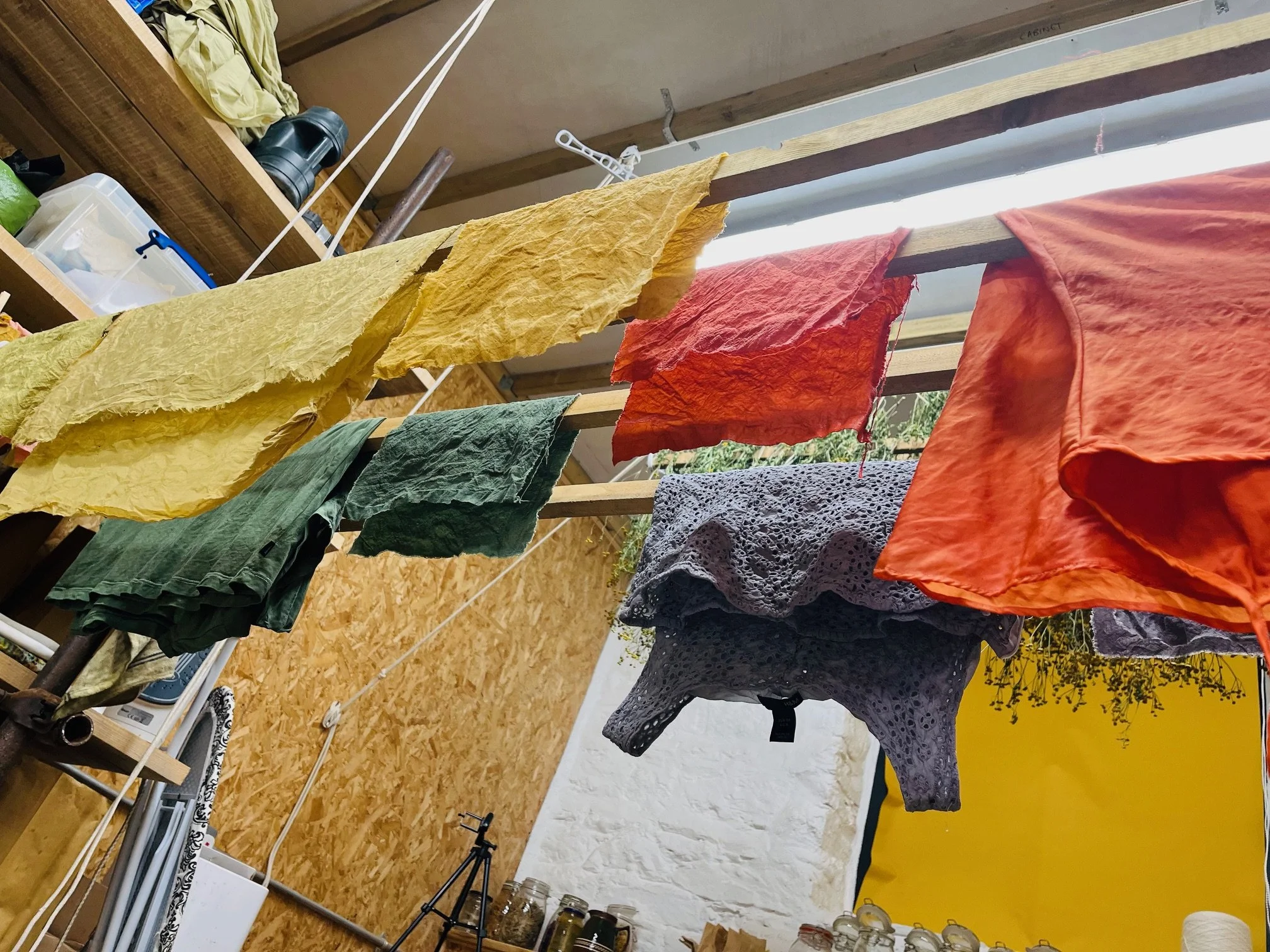
Aftercare
Natural dyes are completely different to synthetic dyes; they are completely biodegradable, whereas synthetic dyes are not. All natural dyes derive from plants or animals, whereas toxic dyes are made up of petrochemicals and pollute our environment. These particular dyes are Organic certified and are grown by hand in a field in South Devon. They are also a vehicle for change; supporting people with learning difficulties into training and work.
Over time, the dyes will change – they are living colour. Below are some notes on how to look after their colour; to help them shine brighter for longer. With the right aftercare, natural dyes can last well for many years. Natural dyes will have some level of colour and tonal variation; this is inherent in the dyestuff and not considered a fault or irregular.
Colour Transfer/Crocking:
Some of our dyes may exhibit slight colour transfer after wearing or rubbing on the first use. Wash all naturally dyed items alone/with like colours in cold water for the first wash.
Washing naturally-dyed garments:
Use a PH neutral soap such as Ecover ZERO, washing at a maximum of 30 degrees Celsius. A good idea is to compile a wash of woollens, silks and naturally dyed items for a wash together (after first wash); then select a ‘wool’ or ‘delicates’ wash on your machine.
Drying naturally-dyed garments:
Dry (and store) garments out of direct sunlight. This will help with colourfastness. Also, avoid wearing a naturally-dyed garment on the sunniest days, where you are in direct sun for long periods (i.e. if you work on the land).
pH Sensitivity:
Natural Dyes can shift tone with exposure to substances with extreme pH.
This means that some dyes may shift colour when exposed to an acid or alkaline substance. An alkaline substance (i.e. soda ash) may disappear after washing. Exposure to an acid (i.e. vinegar) can create a permanent stain. One way to mitigate this is to saturate an acid stain with cold water as soon as possible.
Alum deodorant:
Natural dyes will react to alum-based deodorants, as this is a type of mordant, therefore colours may deepen in the underarm area after use. To avoid this, you could try not to use antiperspirant deodorants which contain Aluminium (in order to block pores from sweating).
